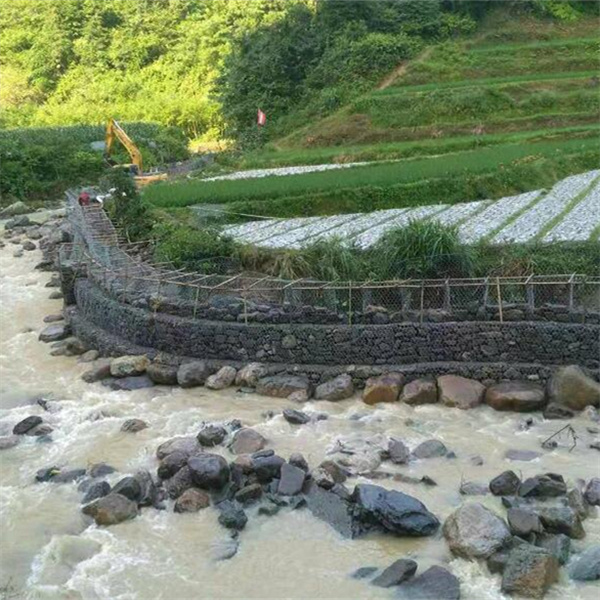Jan . 13, 2025 14:52 Back to list
gabion definition
The term gabion holds significant prominence in the field of construction and landscaping, known for its multifaceted applications and enduring benefits. Gabions are essentially cages, cylinders, or boxes filled with materials such as rock, concrete, or sometimes sand and soil. Their usage, which spans centuries, ranges from ancient military fortifications to modern architectural designs, indicating their adaptability and effectiveness.
In terms of construction, gabions afford remarkable flexibility. They can be shaped and adapted to fit diverse landscapes and are particularly beneficial in remote or difficult-to-access locations. This flexibility can translate to cost savings, as the materials for filling gabions are often sourced from the site itself, diminishing transportation and material expenses. Furthermore, the simplicity of gabion installation often negates the need for heavy machinery, which can reduce both the environmental footprint and overall project costs. The aesthetic appeal of gabions cannot be overlooked. In contemporary architecture and landscape design, gabions are increasingly utilized for their unique blend of functionality and visual interest. Their rustic, natural appearance can be integrated into gardens, façades, and public parks, where they double as artistic installations and structural components. This multifunctionality makes them an attractive option for projects aiming to achieve a balance between utility and design. For professionals in construction and landscape management, embracing gabions can enhance project credibility and trustworthiness. Utilizing a technique with deep historical roots and proven results underscores a commitment to enduring quality and innovative solutions. Peer endorsements and case studies further cement gabions' reputation, providing new users with confidence in their long-term viability and performance. In essence, the application of gabions is a testament to blending tradition with innovation. Their historical roots are grounded in practical construction needs, while their contemporary use reflects a shift toward designs that respect both nature and community needs. As environmental challenges mount, gabions represent a reliable, sustainable option, ensuring they remain an indispensable component in the toolkit of forward-thinking builders and designers.


In terms of construction, gabions afford remarkable flexibility. They can be shaped and adapted to fit diverse landscapes and are particularly beneficial in remote or difficult-to-access locations. This flexibility can translate to cost savings, as the materials for filling gabions are often sourced from the site itself, diminishing transportation and material expenses. Furthermore, the simplicity of gabion installation often negates the need for heavy machinery, which can reduce both the environmental footprint and overall project costs. The aesthetic appeal of gabions cannot be overlooked. In contemporary architecture and landscape design, gabions are increasingly utilized for their unique blend of functionality and visual interest. Their rustic, natural appearance can be integrated into gardens, façades, and public parks, where they double as artistic installations and structural components. This multifunctionality makes them an attractive option for projects aiming to achieve a balance between utility and design. For professionals in construction and landscape management, embracing gabions can enhance project credibility and trustworthiness. Utilizing a technique with deep historical roots and proven results underscores a commitment to enduring quality and innovative solutions. Peer endorsements and case studies further cement gabions' reputation, providing new users with confidence in their long-term viability and performance. In essence, the application of gabions is a testament to blending tradition with innovation. Their historical roots are grounded in practical construction needs, while their contemporary use reflects a shift toward designs that respect both nature and community needs. As environmental challenges mount, gabions represent a reliable, sustainable option, ensuring they remain an indispensable component in the toolkit of forward-thinking builders and designers.
Next:
Latest news
-
Wire Mesh Thickness Impact on Gabion Wall Load Bearing
NewsAug.12,2025
-
Ultimate Guide to Hexagonal Gabion Box
NewsAug.12,2025
-
Types of Rocks for Gabion Baskets Durability and Aesthetics
NewsAug.12,2025
-
Standard Gabion Box Sizes and Their Industrial Applications
NewsAug.12,2025
-
Easy Guide to Building Garden Gabion Cages at Home
NewsAug.12,2025
-
Drainage Solutions for Gabion Mesh Structures
NewsAug.12,2025
-
Visualizing Gabion 3D Integration in Urban Landscapes with Rendering
NewsJul.23,2025
Manufacturer of Silk Screen Products
QuanhuaProvide high-quality products and services to global customers.






